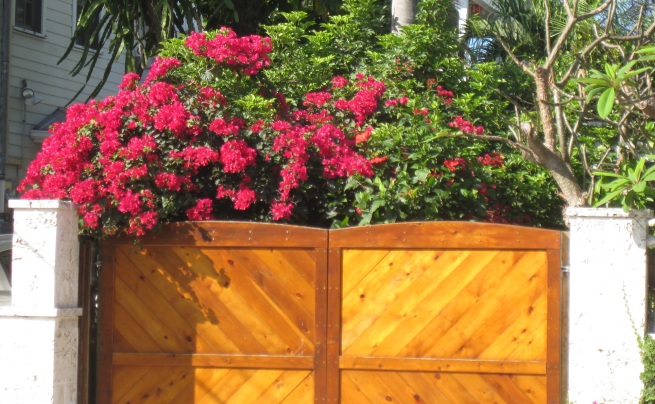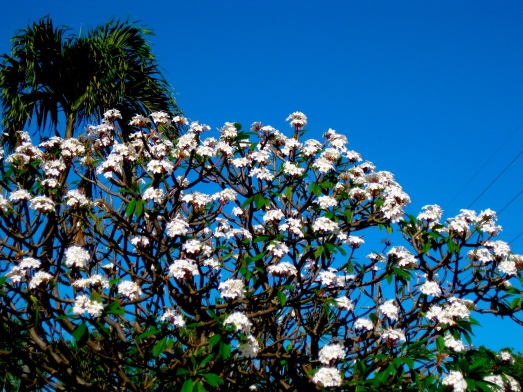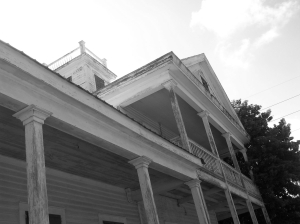
For Kay of the East and Kay of the West…
I’ve always been a child who drifted. It was hard for me to stay focused and alert much of the time, as I would drift off into daydreams or fantasies while teachers and people were trying to teach or talk to me. I realize now that it was a progressive hearing loss that was affecting me– since I couldn’t actually hear what was going on around me, why should I pay attention? And I kind of got the reputation for being naive, and dopey. I sat through numberless Broadway plays and musicals, not hearing much of what was happening onstage, though it was fine meeting and hearing Gloria Swanson backstage because she was IN MY FACE. As I grew older, everything became muffled, like I was listening to the Universe through wads of cotton. When I got hearing devices a few years ago, the world opened up and I could suddenly hear a pin drop. And I could hear trucks and cars and thunder and explosions and screams and people people people all the time, everywhere, constantly. talking talking TALKING. It’s noisy out there! And, since I began hearing every word coming from people’s mouths, I realize that we really don’t have much to say to one another most of the time. Or, much of it sounds the same.
With all this new noise, I get headaches sometimes. My brain, which presumably had formed itself into completion by the time I was 21, suddenly had to deal with all the loud new stimuli which assaulted me beginning at age 50. It can’t handle it. It gets crazy sometimes, and I find myself retreating: I turn off the devices, get on the bike, and ride blissfully into the sun (keeping keen watch for traffic, of course, as well as my bad eyes can manage). Don’t misunderstand– I mean, I could always HEAR, just not very well at all. I was hearing things, but had to ask “WHAT?!?!” in order for things to be repeated.
My recent get-away-from-the-noise bike ride brought me to the West Orange Trail out in western Orange County, one of my favorite places to prowl around in. I load the bike onto the bike rack, an ingenious contraption which, so far, has served me well. It’s attached to the hatch of my red Ford Focus via a system of straps and clips and clamps, the bicycle nestled atop it securely with two plastic belts. Speeding along the 408 towards the Turnpike Extension, I admit I do worry that everything is going to go flying off the back of my car and into the windshield of a station wagon filled with lovely, delightful nuns, but so far it hasn’t happened.

Now that the 408 has been extended as far west as Killarney, a confusing romp through the Fruit Loop (that’s where the 408, the 429, the Turnpike, and 50 all converge) most of the time deposits me onto West Colonial Drive, and then it’s just a short drive to the Trail stop in Killarney near the Lake County border. A couple of times I’ve overshot my exit and ended up further north along the Turnpike near a place called Minneola, but it’s a scenic error and not too bad.

That’s the bridge over the Turnpike. When you look below, you see cars heading towards Miami or Ocala.

Here’s part of the boardwalk through the new Oakland Nature Preserve, a wetlands adventure that brings you to the shores of storied Lake Apopka. That vast body of water (why are large bodies of water always referred to as vast?) stretches for miles in every direction, and has only in recent years been encouraged to recapture some of its former glory– polluting muck farms along its shores have been shut down and the land reclaimed by the lake. At one time it was one of the most famous places in the country due to its excellent bass fishing.


Below is a shot of Trinity Missionary Baptist Church on Oakland’s traditionally African-American west side. It’s typical of the tens of thousands of country Baptist churches sprinkled across the Bible Belt.


Some of the Tilden resting places in the Oakland Cemetery. The Tildens were a pioneer family who arrived in Florida in 1876. This Tilden built Meadow Marsh in the community of Tildenville.

Here’s Meadow Marsh, the Luther W. Tilden house. Some years ago, when it was being renovated into a bed and breakfast, I ventured inside and asked the carpenters if I could take a few pictures. But of course! It’s no longer an inn; plans for its most recent incarnation would have it become a civic / community center for the new Oakland Park subdivision, but that project is on hold due to the economy’s collapse.

The pioneer Luther F. Tilden home on Avalon Drive in Tildenville- the second house he built on this site. There is speculation that this was a Sears pre-fab house.

The first house built by Luther F. Tilden, just north of and next to the second family homestead; this was moved so theathe big blue house could be built.

Oakland Park: streets and lampposts, but no houses in this photo… as of 2013, however, the development has been restarted. Lots of houses now.

Trees have grown up through the old railroad tracks going into Tildenville.

Just east of Oakland on 438 stands this gorgeous home, known as Oakland Arms, built by Charles H. Tilden in 1910. Its most recent resident was his granddaughter, Margaret McKinnon.

The avenue of oaks, known as the Sadler oaks, on 438 between Oakland and Tildenville.

Down a road marked Private I merrily pedaled my bicycle, and found this picturesque old barn. I’m surprised I wasn’t beset by dogs, wild boar, or chickens, not to mention any angry locals. I think everybody was at work.

Here is the second pioneer Sadler home, built in 1906. It replaced the original 1880’s structure, which was divided into two parts and set behind this house. People did sensible things like that back then.

In beautiful downtown Oakland is this home, which– when the town was a thriving, busy railroad town featuring hotels, an opera house, and more– served to house workers for the different railway yards.This was built around 1875.

The Oakland Town Hall, right there on the bike trail.

At one time this home (the Petris family built it) featured a sign that said “The 1879 House.” It’s on the northwest corner of Brock Street and Oakland Avenue (438).

Another dignified Oakland lady.

This home was once the dining annex for the Oakland Hotel, which was attached at the left. The hotel was built in 1910 but this house stood in 1890.

The tumble-down walls above, on Tubb Street, are all that remain of the Smith estate; they now front a new subdivision. Grace Mather Smith lived here with her husband at the turn of the twentieth century, and she was– compared to the rest of Oakland’s more sober Protestant citizens– somewhat of a hellion: she liked to give parties, dance, and play golf. There’s this story: Grace was speeding into Orlando one day for an item she needed for a party, and was stopped by the police and told she’d have to pay a speeding fine of ten dollars. She handed the officer a twenty dollar bill and said “keep the change, I’m coming back through here like hell in a few minutes!”
Grace and her husband built the West Orange Country Club south of Tildenville on Avalon Road. Up until some years ago, its labeled brick archway still stood, but it appears to be gone when I look on Google Earth. It was built to resemble Grace’s walls.

A closer look at Grace’s wall, a the side of a new house. And in the center of town near the Town Hall and post office is a small green called Grace Park, established by the Smiths near a hundred years ago.


The dock at the north end of Tubb Street facing Lake Apopka. I had a nice chat with this guy about alligators.

These are piers which once supported a much larger dock that featured a bandshell.

Just south of the northernmost house on the east side of Tubb Street, this home’s front porch once collapsed to the ground due to overcrowding during a boisterous party. Don’t you wish you could have been there? The Manhattans must have been REALLY good.

An orange grove in the center of Oakland.

Centennial Plaza in downtown Winter Garden. The trail goes right through the heart of this cool little town to the east of Tildenville.

Downtown Winter Garden.

Monolithic First Baptist.

Down one of the side streets in Winter Garden. I could live in this little apartment house!


City Hall in Winter Garden– a deco dream.

This beautiful little gem rests in downtown Winter Garden, right off the trail. many people would see this and think termites,mold, mildew, too many cats, and hornets. I look at it and dream of built-in bookshelves, enamel topped kitchen tables, rose gardens, and writing on the back porch. And cocktails in the evening light.

The Winter Garden Heritage Museum.

The east side of the bridge over the Turnpike, heading back to the Lake County line.
I’m writing this on Thursday. Tomorrow I have an appointment with historians in Winter Garden so that I can show them my photographs of the area that I’ve been taking since the 1980’s; a history of Oakland is being compiled and I’m beside myself with interest. I was originally going to drive to the outpost on the Lake line and then bicycle to my meeting, but my scrapbooks are sort of heavy and when I jam them into my basket for a test run, suddenly I’m off balance and wobbling into traffic. What I’ll do is drive to the trail post in Winter Garden– ah HA!– have my meeting, leave my books with the ladies, and then ride the bike for a couple of hours. There are some things I’ve missed, and I want to have a little lunch as well. And then Saturday is the Oakland Heritage Festival; there are going to be some history displays and guided tours of town and I hope that I won’t speak out of turn.
It’s kinda quiet and peaceful back here in the nineteenth century… ! Let me know if any of you ever want to take an escorted bicycle tour of the area with me.
ADDITIONAL MATERIAL FROM Saturday, October 30, Oakland Heritage Festival
The town featured a pleasant little crafts / antiques fair, and offered driven tours through town, and a pontoon boat ride on lake Apopka. We opted for the latter, as I’d never been on Lake Apopka, and it was time. They took us west over to Gourd Neck Springs, which were partially covered by a floating island of trees and debris blown into a clump during one of the 2005 hurricanes. The ride was great– knowledgeable environmentalist guides give you updates on the restoration of the lake (one had a charming Irish brogue), and it’s evident how passionate they are about their work. If you get a chance, and are experienced, see if you can arrange to rent a boat, and go out there.

Heading west on Lake Apopka

At Gourd Neck Springs, on the southwest side of the lake.

Here you can see part of the floating island of natural hurricane debris. We are right over the spring at this point; it’s almost 40 feet below.
~ ~ ~ ~ ~

































































































































































